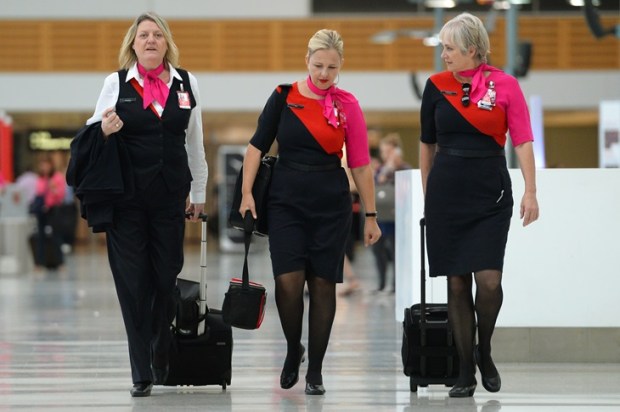Australia needs a COVID-19 reset.
After seven hard months of social isolation, economic pain and despair about the future, the time has come to change course.
COVID-19 is not going anywhere. It never was.
This virus cannot be eliminated; there is no vaccine.
It will not be avoided; global transmissions are surging.
What is clear is that the virus spreads faster than influenza and without a vaccine, it will kill more people than it.
These facts alone justify a unique response. But that response must be proportionate to the risk.
Children should be educated, family must be cared for, and debt has to be serviced.
None of these things are possible under a never-ending lockdown.
Lockdowns do not work because they are a flawed solution to a complex problem.
They curtail personal freedom by ignoring demographic resistance.
They lack proportionality by outlawing activities which pose a minimal threat to public health.
And they polarise communities by divvying up exemptions based on employment and social status.
These realities are anathema to Australian society. We have never lived this way and we can’t be expected to any longer.
COVID-19 is already changing Australia for the worse.
As you read this, our people are further dividing into two Australias.
The first part comprises those Australians whose employment remains unaffected by the crisis – predominantly public sector workers. This group of Australians have kept their jobs, grown in number, and even enjoyed pay rises.
The second part are those Australians whose lives now lie in ruins. They are young Australians, small business owners, the self-employed, and those otherwise employed in the productive, private part of the economy.
Twelve months ago, the later were the backbone of Australian prosperity. Today, they are the victims of government decision-makers immune to adversity.
Embittering the public mood has been the uneven application of lockdown enforcement.
Again, two distinct Australias have emerged.
Celebrities like Shane Warne leave the nation to commentate on cricket in the UK, while regular Australians are refused travel for funerals or palliative care.
Black Lives Matter protestors take to the street in defiance of social distancing orders, yet mainstream Australians are the ones fined for holding picnics and BBQs.
And foreign students can easily traverse our country, but agricultural workers living along state borders cannot.
Sadly, all of this has been done in the pursuit of a goal which cannot be achieved – virus elimination.
Without a proper debate or public approval, governments across the nation have dumped the goal of ‘flattening the curve’ in favour of ‘virus elimination’ – an ambition which is unachievable without a vaccine or an end to global transmissions.
And as each government demands greater and greater sacrifice from the public in pursuit of this goal, the Australian community suffers ever more.
Intentionally or otherwise, Australia’s COVID-19 response has placed the nation on a highway to nowhere without an off-ramp.
A target of zero cases means zero jobs, zero freedom, and zero hope. And we have had enough.
Australia needs a plan to live with COVID-19 where the risks of infection are balanced against the risks long-term lockdowns impose on greater society.
Recently, the Institute of Public Affairs released its Medical Capacity: An Alternative to Lockdowns report, offering a pathway for achieving that balance.
Medical Capacity confirms that the cost of a COVID-19 elimination strategy is over $319 billion.
This figure is the equivalent to 2.2 times the total annual value of Australia’s entire Health Care and Social Assistance industry ($142.9 billion) and is equal to the 2018-19 Commonwealth Government expenditure on defence, education, health, and social security and welfare combined.
Medical Capacity charts a more reasonable course.
It acknowledges the risks posed by COVID-19 – and manages them.
It recognises the human costs of lockdown – and alleviates them.
Critically, it incorporates the latest learnings about the virus to ensure our risk management approach evolves alongside it.
The best COVID-19 response has always been about balance.
Governments should put in place measures to protect the elderly and vulnerable, implement high-quality contact tracing, continue with random community testing, and maintain international border control measures.
Equally, they must put an end to extreme lockdowns and relax social distancing measures so that economic, social, and recreational life can return to normal.
It is never too late to correct a mistake. It is never too late to restore freedom.
A new approach is required to steer Australia through the next stage of this pandemic.
And that approach is ready right now.
Asher Judah is an Institute of Public Affairs Associate, a public policy professional, business entrepreneur and published author.
Got something to add? Join the discussion and comment below.
Get 10 issues for just $10
Subscribe to The Spectator Australia today for the next 10 magazine issues, plus full online access, for just $10.


























Comments
Don't miss out
Join the conversation with other Spectator Australia readers. Subscribe to leave a comment.
SUBSCRIBEAlready a subscriber? Log in